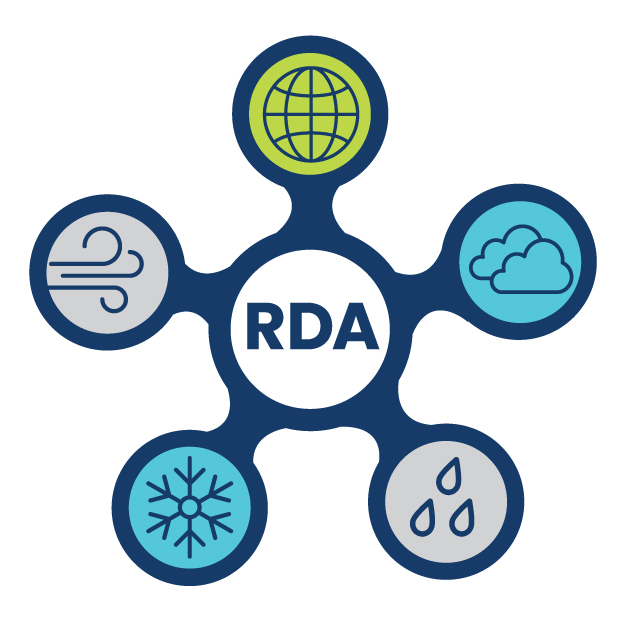
ECMWF IFS High-Resolution Operational Forecasts
d113001
| DOI: 10.5065/D68050ZV
ECMWF has implemented a significant resolution upgrade and methodology for high-resolution forecasts (HRES) and ensemble forecasts (ENS) beginning January of 2016. HRES is now performed via a transform grid with a nominal grid point spacing of 9 kilometers (0.08 degrees), and is carried out with IFS (Integrated Forecast System). Improvements in computational efficiency and effective resolution have been brought about by implementing a triangular cubic octahedral reduced Gaussian grid in which the shortest spatial wavelength is represented by at least four grid points anywhere on the globe, as opposed to the former linear arrangement whereby the shortest wavelength was represented by two grid points, while at the same time retaining the same number of spherical harmonics and triangular truncation. (The term "cubic" is due to the ability of the grid to represent cubic products in the dynamical equations.) In addition, the reduction of grid points along latitude circles as one approaches the poles is achieved using a triangular to octahedral mapping which corresponds to a poleward reduction of four points per latitude circle and an optimization of the total number of grid points and their local mesh resolution. ECMWF has documented superior filtering properties at higher resolution, an improved representation of orography, improved global mass conservation properties, substantial efficiency gains, and more scalable locally compact computations of derivatives and other properties that depend on nearest-neighbor information only. More details may be found in the publications cited below.
NCAR's DECS is performing and supplying a grid transformed version of HRES IFS, in which variables originally represented as spectral coefficients or archived on a reduced Gaussian grid are transformed to a regular 5120 longitude by 2560 latitude N1280 Gaussian grid. In addition, DECS is also computing horizontal winds (u-component, v-component) from spectral vorticity and divergence where these are available.
There are no restrictions.
There are no restrictions.
| Air Temperature | Albedo | Albedo | Cloud Frequency |
| Convection | Convergence | Dew Point Temperature | Evaporation |
| Geopotential Height | Gravity Wave | Heat Flux | Humidity |
| Ice Extent | Incoming Solar Radiation | Longwave Radiation | Maximum/Minimum Temperature |
| Outgoing Longwave Radiation | Planetary Boundary Layer Height | Precipitation Amount | Runoff |
| Sea Level Pressure | Sea Surface Temperature | Shortwave Radiation | Skin Temperature |
| Snow | Snow Density | Snow Depth | Snow/Ice Temperature |
| Snow/Ice Temperature | Snow Melt | Soil Classification | Soil Moisture/Water Content |
| Soil Temperature | Sunshine | Surface Pressure | Surface Roughness |
| Surface Winds | Terrain Elevation | Total Precipitable Water | Tropospheric Ozone |
| Upper Air Temperature | Upper Level Winds | Vegetation Cover | Vegetation Species |
| Vertical Wind Velocity/Speed | Vorticity | Water Vapor | Wind Stress |
Latitude Range: Southernmost=89.946S Northernmost=89.946N Detailed coverage information Detailed coverage information 0.07° x 0.07° from 0E to 359.93E and 89.946N to 89.946S (5120 x 2560 Longitude/Latitude) 0.07° x ~0.070° from 0E to 359.93E and 89.946N to 89.946S (5120 x 2560 Longitude/Gaussian Latitude)
 This work is licensed under a Creative Commons Attribution 4.0 International License.
This work is licensed under a Creative Commons Attribution 4.0 International License.